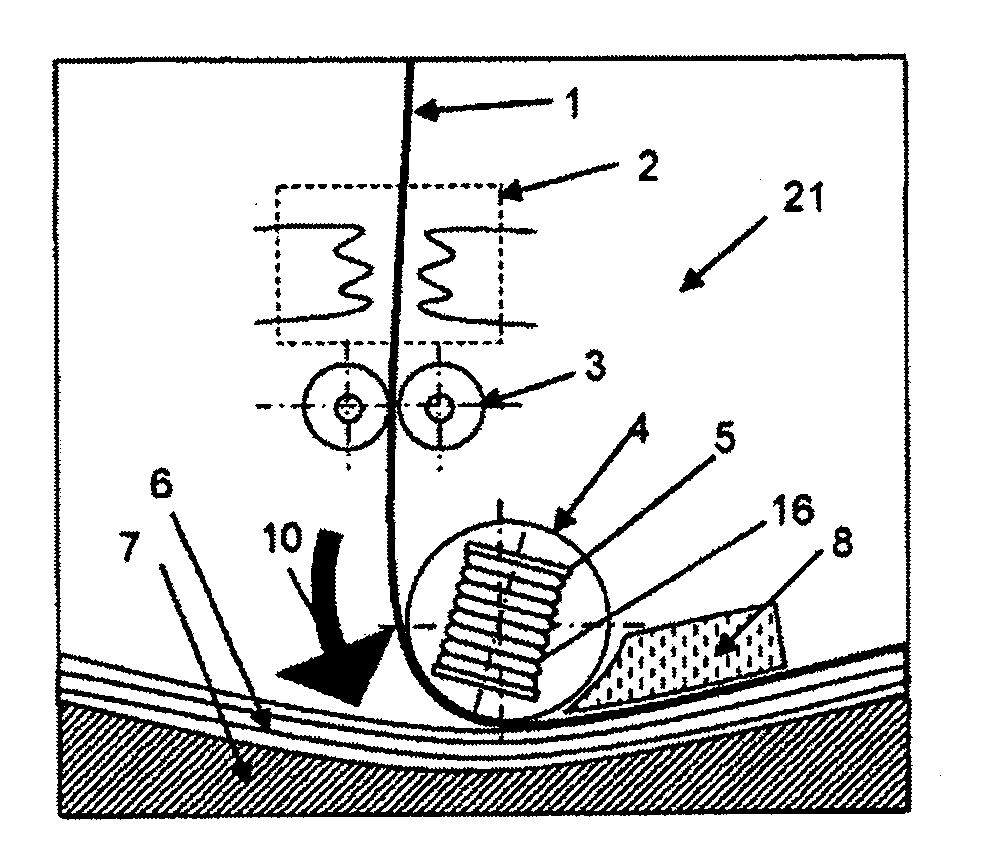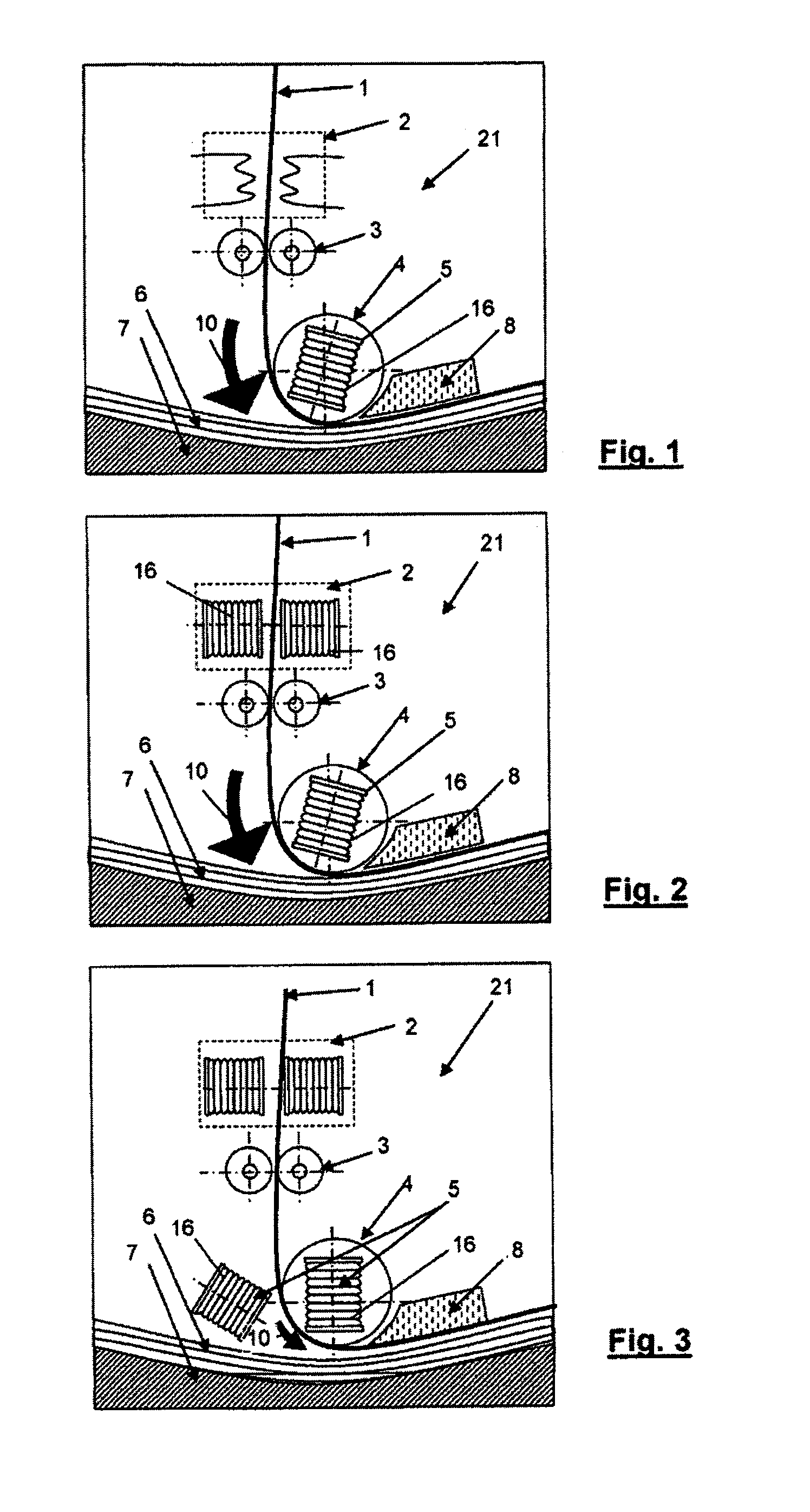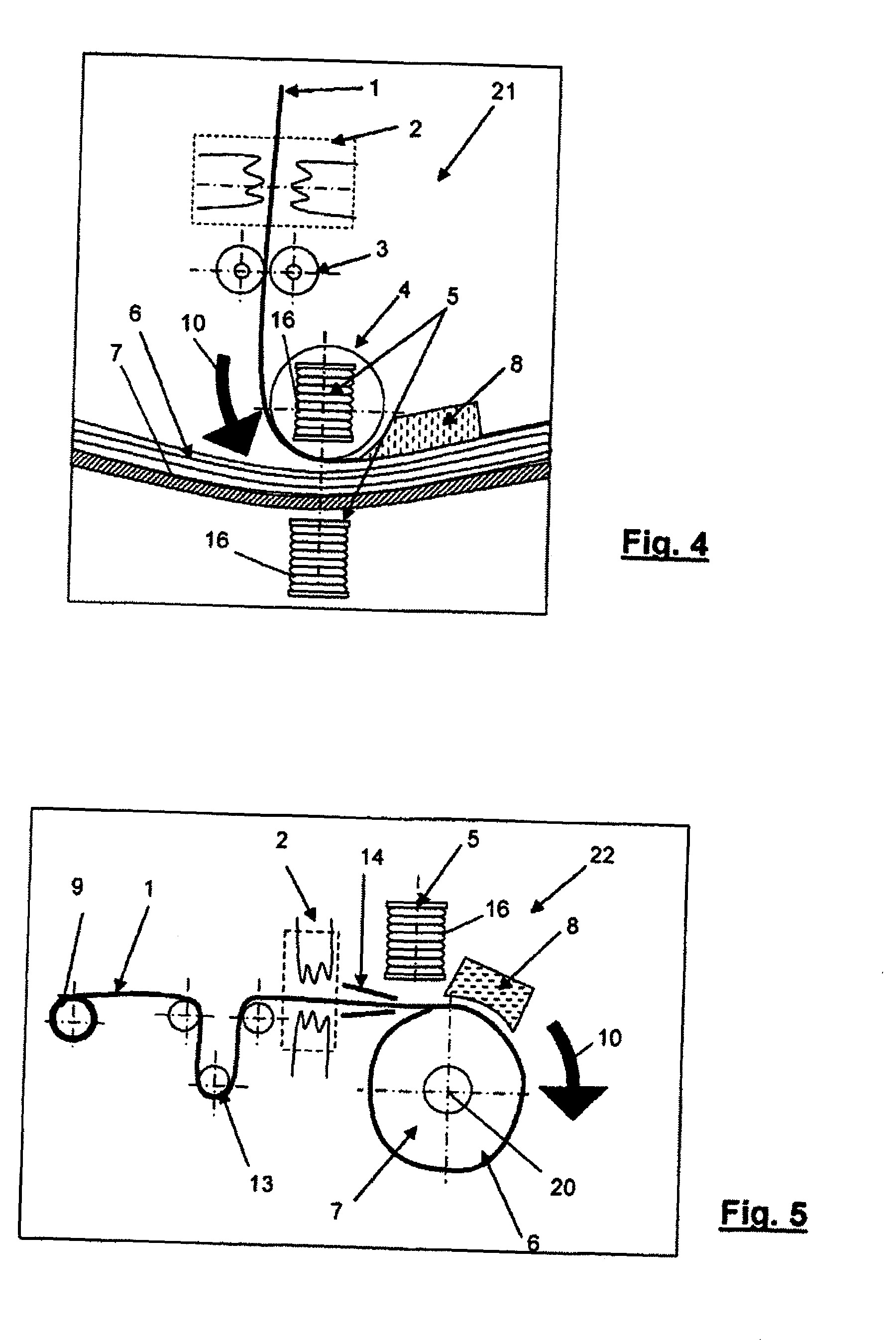Induction-assisted production method
a production method and fiber composite technology, applied in the direction of magnetic paints, magnetic bodies, magnetism/organic metal materials, etc., can solve the problems of high cost, high risk of damaging the starting material, and inability to allow rapid production, and achieve the effect of reducing costs
- Summary
- Abstract
- Description
- Claims
- Application Information
AI Technical Summary
Benefits of technology
Problems solved by technology
Method used
Image
Examples
Embodiment Construction
[0051]Referring now in greater detail to the drawings, FIG. 1 schematically depicts a tape layer serving the purpose of producing a molded article from a strip-shaped starting material 1. The starting material 1 comprises reinforcing fibers, running unidirectionally in a direction of advancement 10 of the starting material in the tape layer, and a thermoplastic resin. With the tape layer according to FIG. 1, the starting material 1 is applied in layers to a mold 7. In this case, only the first layer of the starting material 1 lies directly against the mold 7. The further layers of the starting material 1 are applied to the part 6 of the desired molded article that is already on the mold 7. In order thereby to form a permanent bond between the newly applied starting material 1 and the part 6, the starting material 1 is first initially heated in a preheating device 2, which is indicated here as comprising an electric heater. The heating of the starting material 1 to the joining temper...
PUM
| Property | Measurement | Unit |
|---|---|---|
| diameter | aaaaa | aaaaa |
| frequency | aaaaa | aaaaa |
| frequency | aaaaa | aaaaa |
Abstract
Description
Claims
Application Information
 Login to View More
Login to View More - R&D
- Intellectual Property
- Life Sciences
- Materials
- Tech Scout
- Unparalleled Data Quality
- Higher Quality Content
- 60% Fewer Hallucinations
Browse by: Latest US Patents, China's latest patents, Technical Efficacy Thesaurus, Application Domain, Technology Topic, Popular Technical Reports.
© 2025 PatSnap. All rights reserved.Legal|Privacy policy|Modern Slavery Act Transparency Statement|Sitemap|About US| Contact US: help@patsnap.com



